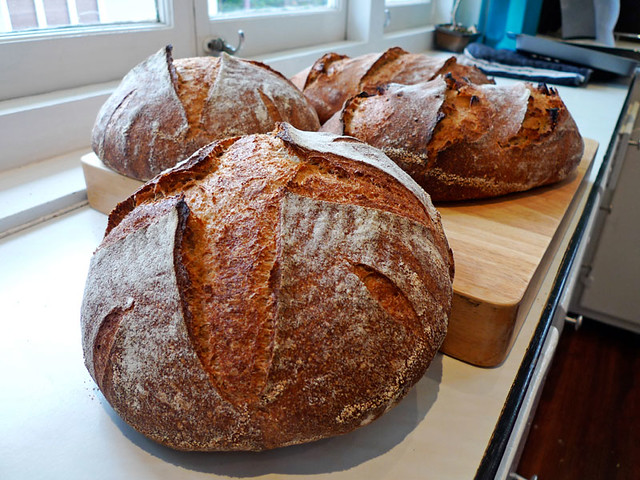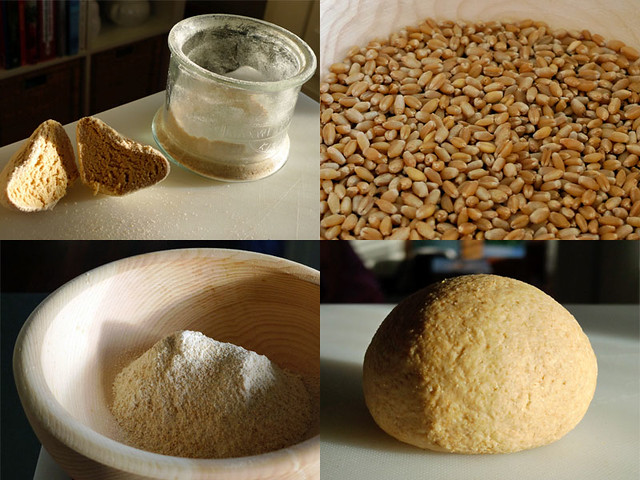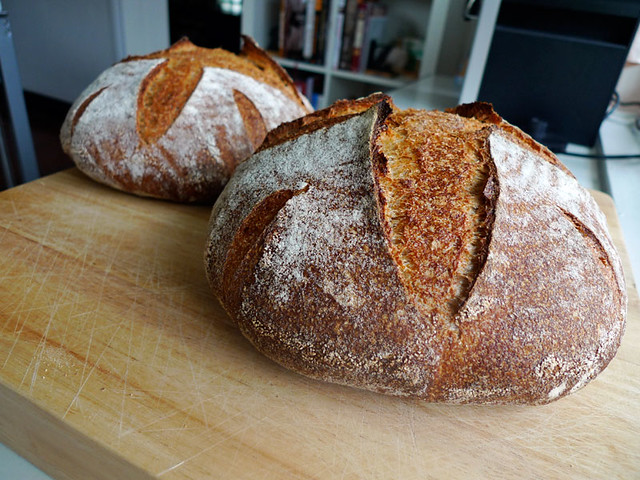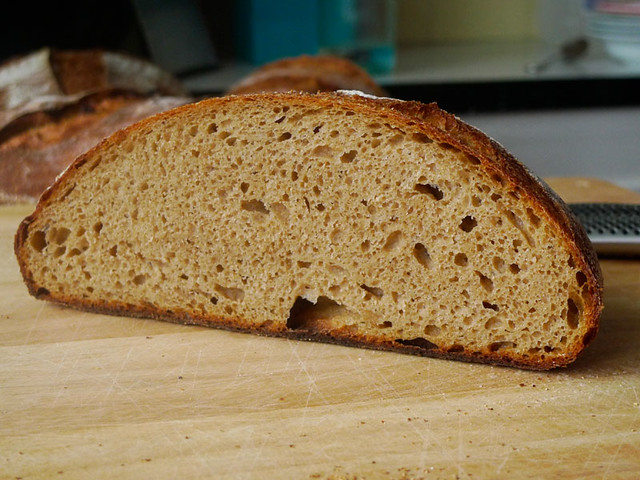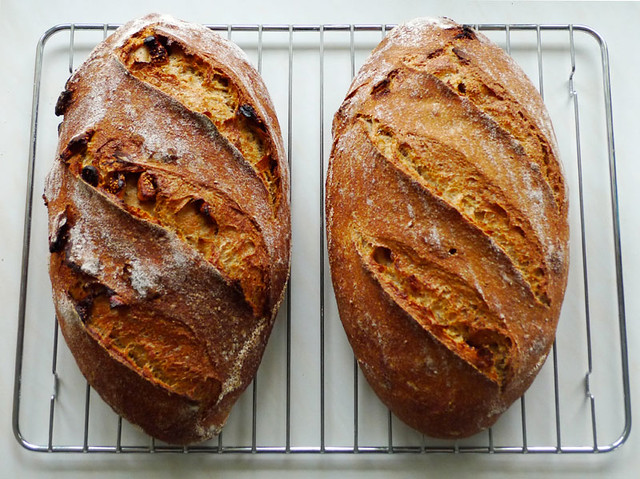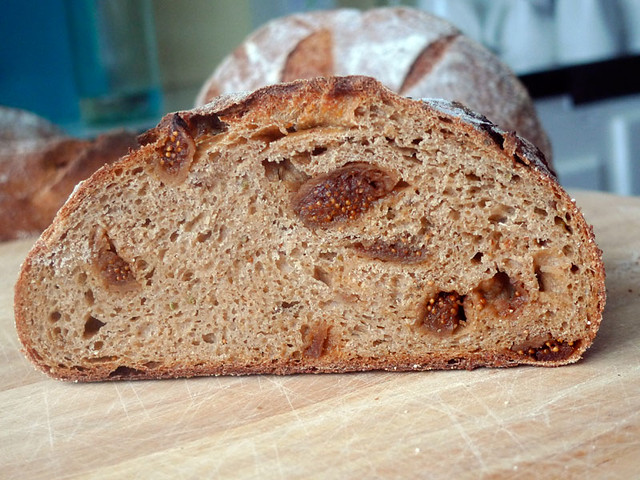
Greek Easter Bread
Makes one 2 ½ pound loaf
4 Tablespoons butter
2 heaping dessertspoons of honey
2 eggs
2 teaspoons dry yeast
1½ teaspoons salt (2 if using unsalted butter)
1 teaspoon anise extract
20 ounces (about 4 cups) unbleached white flour
1 1/3 cup water at room temperature
¾ cup additional flour for bench work
A 14" pizza pan fitted with parchment paper
4 red hardboiled eggs (see Dyeing Red Eggs @ http://www.woodfiredkitchen.com/?p=742 )
1 eggyolk+1 teaspoon water for wash
4 teaspoons of raw hulled sesame seeds
Note: A flexible bowl scraper (or a Tupperware lid cut in half) comes in handy for working this dough.
Make the dough: In a mixer fitted with a flat beater, cream together the butter, honey, eggs, yeast, salt, anise extract and 1 cup of the flour. Beat well for 2 minutes. Add 1/3 cup water and ½ cup flour, beat for a minute; another 1/3 cup water and ½ cup and beat, etc., until you have used up all the water and all but a cup of the 20 ounces of flour. Beat for a further 2 minutes.
Scrape off the flat beater, scrape down the bowl, and put in the other cup of flour. Switch to the dough hook; run mixer 10 minutes on low (mark 2 for Kitchenaid). Scrape down bowl if necessary. The dough is not stiff enough for the hook to pick it up, but this mixing will improve its structure.
Knead the dough: Sprinkle half of the benchwork flour onto a counter or board, scrape the dough onto it and, using the scraper, quickly fold the edges in to the middle. Put a bit of flour onto the dough and let it rest for a few minutes while you clean out the bowl.
Knead for 5 minutes, adding flour as necessary until you have used up the ¾ cup of extra flour.
First rise: Put the dough into the bowl, cover and let rise at room temperature for 3½ hours.
Second rise: Use the bowl scraper to pull the dough in from the edges, releasing the air, and then let rise 1½ hours at room temperature.
Make the braid: Turn the dough out onto a barely floured counter. Cut a 5-ounce piece of dough off and put it to one side, covered. Now, make bulk of the dough into a snake about 2 feet long, rolling it on the counter under your hands to stretch it out. Let it rest for a few minutes. For the next step you will want a clean section of counter 3' wide, with no flour on it or the dough will slip instead of roll.
Roll the dough snake out to 3' long, and cut into three equal pieces of about 12 ounces by weight. Roll each of the three pieces out to nearly 3' long. Your dough ropes should be 5/8" in diameter and roughly uniform.
Put 3 ends together, cross two ropes and throw the third across the Y. Braid until the ropes are used up, keeping the dough slack to keep the braids loose and thick.
Make the loaf: Lift one end of the braid off the counter and slip the parchment lined pan under it, and then lift the other end around to form a circle. Overlap the two ends of the braid by an inch, and push your thumb down in at that point. The first egg will go into that depression.
Adjust the braided ring on the parchment to make it as round as you can, and push your thumb down to make depressions at the other 3 quadrants. Carefully put in the eggs.
Roll the leftover piece of dough into a snake the thickness of a pencil. Around the eggs, snip 4 places with scissors to receive the ends of the dough that crosses over them. Cut pieces of dough to make the crosses.
Final rise: Cover lightly with a cloth and let rise for 40 minutes.
Preheat oven to 400º. If you're using a pizza stone or quarry tiles (recommended), let them heat up for at least 30 minutes.
Glaze and bake: Mix the egg yolk and the water in a ramekin, and brush the egg wash over the dough, being careful not to cover the eggs. For best coverage, brush a second time. Sprinkle with sesame seeds.
Bake for 10 minutes at 400º. Turn oven down to 350º and bake for another 25 minutes, turning the bread around at halfway.
Let cool for at least an hour before sharing with your Greek friends.
See original content at www.woodfiredkitchen.com










